《Bonnie’s Brunch》开发者分析作品优劣
作者:Lucifer Jheng
我和父母都是台湾游戏开发者。我们团队有4个成员,我是唯一的程序员。最近我们于App Store推出首款iPhone游戏《Bonnie’s Brunch》。这是款模拟/策略回合游戏,其特色是融入各种食物组合和有趣角色。
《Bonnie’s Brunch》发行至今已有2个月,现在我就来分享我们事后分析所获得的经验和观点。
突出表现
1. 愉快视觉设计
从我过去在游戏行业的经历来看,我发现很多人,特别是编程人员,都把美工当作“可替换资源”,能够轻易外包或转包。但我坚定认为杰出美工的重要性丝毫不亚于编程员或设计师。
在开发过程中,我们在视觉设计方面投入大把时间,以确保游戏符合高质量标准,能够第一眼就引起玩家注意。我们的目标的是制作时髦美术画面,掳获台湾玩家及全球玩家的芳心。
由于《Bonnie’s Brunch》融入10个不同类型的游戏角色,因此我们决定加大在角色设计方面的关注。就拿其中的乞丐角色来说,其在游戏中的外观就带来显著消极影响(游戏邦注:其他玩家会轻易被其发臭的气味惹恼,因而在等待餐点过程中变得更没有耐心)。此外,服务乞丐角色完毕后,你也无法从中获得额外小费或奖励积分。为让角色取悦和吸引玩家,我们进行多次修改,以便让其看起来更迷人。
我们在美术方面的付出获得玩家颇多赞赏。很多人都觉得《Bonnie’s Brunch》是款出自西方开发者之手的高质量作品,我们认为这预示着游戏将获得广泛推广。
2. Lua语言组件架构
说到编程,我是Lua语言的倡导者。《Bonnie’s Brunch》是我的第二款商业Lua语言作品。我在这款游戏中采用3种编程语言写编码,比例分别是60% Lua、30% C++和10% Obj-C。虽然渲染和资源管理内容使用的是C++,但所有机制编码都采用Lua。
几年前,我曾读到几篇有关基于组件架构的文章,觉得基于组件相比基于继承,是个更好的架构,所以我便开始利用C#创建基于组件的架构。但直到采用Lua语言,我才真正有效发挥组建架构的优势。
采用Lua语言落实组建架构赋予我较多灵活性。我成功植入系列游戏组件,如Transform、Sprite、Motion、State Machine和Interpolator。
每款游戏都包含1个或多个游戏组件,每个游戏组件第一天都可以重复使用。当我需要额外功能时,我只需要创建新组件,而非采用遗传自父类的子组件。这既整齐又干净利落。
一旦落实架构和游戏组件,我就能在几小时内容快速建立起机制实体模型。在《Bonnie’s Brunch》开发的前几个月里,游戏实体只有静态粗糙画面和许多“颜色模块”。虽然游戏最初看起来并不雅观,但基于组件的架构帮助我们瞄准核心玩法设计。
3. 额外完善时间
我们原本的制作计划是在3个月内完成。最终,我们花了6个月时间。在第3个月末,我们就几乎完成所有游戏内部功能。但我们还很多工作要做。我需决定是匆匆发行,还是咬紧牙关润色游戏,让作品更吸引眼球。
就像Noel Llopis说的那样,“好事多磨”。我们团队所有成员都赞同投入更多时间完善《Bonnie’s Brunch》,将作品由普通变成优秀,甚至是杰出。结果我们投入双倍时间和预算,旨在制作高质量内容。
一个典型例子是,在游戏测试过程中,我们发现某些玩家在完成系列关卡后就对重复玩法感到厌烦。所以我们决定在原始玩法中融入特殊关卡,以保持玩家兴致。
为在此特殊关卡中提升游戏玩法,我们让顾客排队点餐。玩家需尽可能快地移动手指,获悉自己在有限时间内能够服务多少顾客。此外,我们在这些特殊关卡中融入紧张背景音乐,以刺激玩家情感。
每完成5个关卡,玩家都会遇到特殊关卡,这是动作游戏的“首领阶段”,旨在挑战玩家技能。事实证明很多玩家都非常喜欢特殊关卡。
4. 强有力本土发行
《Bonnie’s Brunch》发行后,我们立即通过Facebook、Twitter、Plurk和邮件通知所有好友。我们的家人和好友都给予极大支持,帮我们推荐和推广游戏,这给游戏在台湾的本土营销奠定强大基础。
游戏最初在台湾热门付费iPhone游戏榜单中排名第30,但随后就开始疯狂蹿升。幸运的是,在游戏推出第3天,我们就打败《愤怒的小鸟》成为台湾地区排名第一的付费iPhone游戏!游戏在台湾地区所取得的成就也有效推动其在香港、印度尼西亚、马来西亚、新加坡和泰国地区的销售成绩。
由于我们在台湾App Store取得杰出成就,一家当地报纸,两家电视新闻媒体和若干网站采访了我们,它们都刊登诸如“发行3天,《Bonnie’s Brunch》打败《愤怒的小鸟》,蹿升第一”之类的标题。算是种称赞,是吧?
很多人对我们的成就感到惊讶,很好奇我们是如何取得此番成就。其实我们并未在营销和推广方面下很大功夫。我们的经验是让游戏自己说话,让玩家主动进行分享。
失误地方
1. 笨拙食物制作机器UI
我们从玩家那里收到的最大抱怨是关于食物制作机器/设备的运作。
除百吉饼和饮料之类的单击即可食物外,游戏还有其他3种食物机器(游戏邦注:华夫饼机,土司机及平底锅),这些都需耗费几秒钟方能制作出食物,然后再送至等待的顾客面前。我们都知道烤华夫饼需耗费一定时间,是吧?
在《Bonnie’s Brunch》中,要烤华夫饼,你需点击华夫饼机,然后屏幕就会弹出个UI。在这个UI中,你需点击选择制作何种华夫饼。然后你需在UI外点击一下,以关闭UI。几秒钟后,当华夫饼做好时,你需再次点击机器打开UI,然后选择烤好的华夫饼,此时UI就会自动关闭。
为设计这些耗时的机器,我们尽最大努力平衡玩法中的“多样性”和“直觉”内容。为获得多元食物组合(例如圆形和方形华夫饼),我们做出困难决定,就是在机器操作中使用弹出UI。
作为游戏开发者,我们知道自己应尽最大努力简化现有操作。为实现多样化,我们牺牲轻松访问原则。我认为这是种权衡,但其实并非如此。轻松访问原则应该永远放在第一位。
2. 缺乏长期目标
我们在设计阶段几乎没有考虑任何元游戏机制和留存策略。
玩家在每个关卡赚得的资金仅充当积分。很多玩家希望能够掏钱购买某些升级道具,以便让食物机器运作更快或者拥有一个额外餐盘。
由于我们事前并未将玩家长期目标考虑在内,因此随后难以添加这些功能。很多玩家非常喜欢《Bonnie’s Brunch》,但其生命周期不会维持很久因为其重玩性不高。
我们的计划是从小着手,不冒风险。现在回过头来看,这似乎不是个明智决定。
3. 陡峭难度曲线
游戏的头10个关卡简直是小菜一碟。我们通过调查发现就连7岁小女孩都能以3颗星成绩完成前10个关卡。但到了第二部分(游戏邦注:关卡11-20),融入烤炉后,游戏难度就突然增加。更糟糕的是,在第3和第4部分,在美食批评家和乞讨者之类特殊顾客出现后,游戏难度更是急剧提升。
有些玩家表示看到自己努力服务顾客,却只在随后关卡得到1颗星,觉得非常沮丧。虽然玩家只要在前个关卡获得1颗星就能继续晋升至下个等级,但有些玩家还是觉得非常失望,认为“游戏过于困难”。
虽然《Bonnie’s Brunch》被归类为模拟/策略游戏,游戏还是需要玩家在体验过程中快速反应及高度专注。我们发现有很多玩家并不喜欢这类游戏。他们不希望把事情搞砸,将自己置于糟糕境地。
若你的游戏需要玩家同时完成多种任务,你需慎重考虑,想想目标受众是否会喜欢这样的体验。
4. 不明确的营销方向
我们是来自台湾的小开发团队。作为独立开发商,不熟悉或未同欧美市场保持联系非常糟糕。
就像众多开发商看见的那样,我们仍旧处于App Store曝光角逐当中。若我们无法获得世界的关注,就只能默默淡出大众视野。
我将所有优惠券发送给App评价网站,希望他们会有兴趣分析《Bonnie’s Brunch》。但大多数邮件最后都了无音讯。 AppAdvice是唯一给我们机会的网站。
为进一步探究广告是否能够带来影响,我们在TouchArcade的网站主页和论坛购买了2个横幅广告。就目前来看,其影响非常有限。广告每天给游戏iTunes链接带来的点击量还不到50次,点击率甚至低于0.1%。
我们开始怀疑游戏目标受众(游戏邦注:主要是女性群体)是否同TouchArcade主流读者(他们经常浏览专业游戏评论网站)相左。《Bonnie’s Brunch》的美术风格是否迎合西方玩家口味?或者游戏不过是被简单地视作另一“复制”回合游戏?这些都是我们目前正努力理清的问题。
由于《Bonnie’s Brunch》最近刚推出更新内容,游戏销量提高50%。(本文为游戏邦/gamerboom.com编译,如需转载请联系:游戏邦)
Postmortem: Bonnie’s Brunch on iPhone
by Lucifer Jheng
Hello everyone,
My partners and I are independent game developers from Taiwan. Our team has 4 core members and I am the sole programmer. Recently we released our first iPhone game, Bonnie’s Brunch, on App Store. Bonnie’s Brunch is a simulation/strategy dash-making game featuring various food combination and interesting characters.
If you’d like to investigate Bonnie’s Brunch further, we recommend you to read the article from Aftertot and the review from AppAdvice.
It has been 2 months since Bonnie’s Brunch’s published, and now I would like to share some experiences and thoughts we’ve got so far in the form of postmortem.
What Went Right
1. Cheerful Visual Design
In my previous experiences in game industry, I found that lots people, especially engineers, may regard artists as an ‘substitutable resource’ which can be easily outsourced or subcontracted. However, I firmly believe that great artists are no less valuable than any engineer or designer.
During the development process, we spent a great deal of time on visual design to make sure our game has great quality to catch everyone’s eyes at first sight. Our goal is to make a stylish art which appeals not only to Taiwan players, but also to players all over the world.
Since Bonnie’s Brunch has 10 different types of game characters, we decided to put extra effort on the character design. Take one of the characters, the beggar, for example. His appearance in game causes an obvious negative impact (other customers will easily get annoyed by his stinky smell, and become much more impatience to wait for their order served). Further more, after fulfilling his order, he gives you neither extra tips nor bonus scores. To make him attractive and pleasing to players, we underwent several revision to make him actually look adorable.
It has been proven that our effort on art truly gained admiration from our players. Many people think Bonnie’s Brunch is a high quality game developed by western developers, and we consider it is a positive symptom of popularizing our game.
2. Component-based Architecture in Lua
As for the programming, I am a Lua advocator. Bonnie’s Brunch is my second commercial game written mainly in Lua. In this game, I wrote the code in 3 different programming languages that the ratio of each one is 60% Lua, 30% C++, and 10% Obj-C. While C++ is used for rendering and resource handling tasks, all gameplay code is written in Lua.
Several years ago, I read some articles about component-based architecture and consciously recognize that component-based is a better architecture than inheritance-based so I start to build a component-based architecture in C#. However, not until I start using Lua do I leverage the true power of the component-based architecture.
Implementing a component-based architecture in Lua granted me a great deal of flexibility. I have implemented several game components, such as Transform, Sprite, Motion, State Machine, Interpolator, etc.
Every game object comprises one or more game components and every game component is reusable on its first day. When I need extra functionality I only have to create a new component instead of a child-child-child class inherited from one of the ancient parent classes. Neat and clean.
Once the architecture and game components are implemented, I can rapidly do gameplay mockups in just a few hours. In the early months of Bonnie’s Brunch’s development, there were only static raw images and a lot of ‘color blocks’ which represented game objects. Although the game didn’t look pretty at its beginning, the component-based architecture did help us to focus on core gameplay design.
3. Extra Polish Time
Our development plan was originally scheduled to be finished within 3 months. Ultimately, we devoted 6 months to complete the game. At the end of the third month, we had almost finished all the in-game functionalities. However, there’s still a long way to go. We must decide whether to release the game hastily or to bite the bullet and put much more effort into the game to make it shine.
As Noel Llopis said, ‘good things take time’. All our teammates agreed that we need more time to polish Bonnie’s Brunch from a mediocre game to a good, even a great game. As a result, we doubled our development schedule and budget to produce a high quality game.
A perfect example of what I mentioned above is that, during some play-testing session, we discovered that some players inevitably got tired of the repetitive gameplay after finishing a dozen of the game levels. So we decided to create some sort of special level derived from the original gameplay to keep players interested.
To up-beat the gameplay in this special level, we make all customers line up to make their orders. Players have to move their fingers as quickily as possible to see how many customers they can serve in the limited amount of time. Furthermore, we arrange dramatically intense background music in these special levels to stimulate players’ emotion.
In every 5 level of progress, players will encounter a special level which plays a role of ‘boss stage’ in action games that challenges players’ skill. It turns out that a lot of players truly love the special levels.
4. Strong Local Launch
After Bonnie’s Brunch launched, we immediately informed all our friends via Facebook, Twitter, Plurk and mails. Our family and friends gave us enormous support and were being very helpful to recommend and advertise our game, which resulted in a strong foundation in Taiwan local marketing.
At first, we watched our game show up with the ranking #30 in Taiwan’s Top Paid iPhone Games, and then started climbing like crazy. Luckily enough, on the third day after the release, we brought down Angry Birds and ranked Top 1 Paid iPhone Games in Taiwan! The achievement in Taiwan also boosted our sales in Hong Kong, Indonesia, Malaysia, Singapore and Thailand.
Because our outstanding performance in Taiwan App Store, we’re interviewed by one local newspaper, two local TV News and several websites — with a title such as: “In just 3 days, Bonnie’s Brunch has defeated Angry Birds and ranked Top 1.” Quite a compliment, isn’t it?
Many people were amazed at what we’ve achieved and wondering how we did it. In fact, we did nothing particular in the aspect of marketing and promotion. The lesson we learned is to let the game talk itself and make people want to share it.
What Went Wrong
1. Clumsy Food-Making Machines UI
The biggest complaint we received from players is about the operations of the food-making machines/devices.
In addition to the one-tap-ready foods such as bagel and drinks, there are 3 other kinds of food machines (waffle, toast and pan) that will take a few seconds before the food to be well-baked and dragged to the waiting customer. We all know that baking a waffle requires some time to complete, right?
In Bonnie’s Brunch, to bake a waffle, you have to tap the waffle machine and then it pops up an UI. In the UI, you need to tap to choose which kind of waffle you’d make. Then you can tap outside the UI to close it. A few seconds later, when the waffle is ready, you have to tap the machine again to open the UI, and select the baked one, and then the UI closes itself automatically.
To design these time-consuming machines, we tried really hard to balance the gameplay between ‘variety’ and ‘intuition’ aspects. In order to provide a wide variety of food combination (circular & square waffles, etc), we made a difficult decision to use a popup UI for machine operations.
Being game developers, we recognized that we should have done our best to make the operation simpler than what it is now. To achieve the variety, we had sacrificed the accessibility. I thought it was kind of a tradeoff, but it is apparently not. Accessibility is always the first priority.
2. Lack of Long Term Goals
In the design phase, we barely pondered any meta-game mechanics and retention strategies.
The money players earned in each level plays only one role as being the score. Many players request that they wish to spend the money to buy some upgraded items to make food machines operate faster or to have one extra plate.
Because we didn’t take players’ long-term goals into consideration beforehand, it is difficult to add these features later. People may love playing Bonnie’s Brunch very much, but the life cycle of it won’t last long because the replayability is low.
We planned to start small and play safe. In retrospect, this might not be a good decision we had made.
3. Steep Difficulty Curve
The game is easy as a piece of cake in the first 10 levels. We had investigated that even a 7-years-old little girl can complete each of the first 10 levels in 3 stars. However, when they go to episode 2 (level 11 to 20), the difficulty suddenly rises after the toast machine is added. What worse is that, in episode 3 and 4, the arrivals of some special customers such as food critics and beggars acutely and sharply increase the difficulty of the game.
Some players indicated that they felt frustrated when they tried hard to fulfill customers’ orders but only can get 1 star in later levels. Although players can still proceed to next level as long as they achieved 1 star in the preceding level, some players are depressed and consider the game ‘too hard to play with’.
Despite being categorized in simulation/strategy game, Bonnie’s Brunch requires players’ quick reaction and high attention in the game sessions. We found that there’re a handful of players who do not enjoy this genre of games much. They don’t want to screw up things and make themselves look awkward.
If your game requires multitasking reflex from players, you should really think twice whether your target audience will love it or not.
4. Unclear Marketing Direction
We are a tiny team from Taiwan , which is usually mistaken by Westerns as Thailand (No, Taiwan is not Thailand). Being a independent developer, it is a shame to be unfamiliar and lacking contacts with the U.S. and Europe markets.
As many developers know, we are all fighting a visibility war in App Store. If we fail to make the presence known to the world, then we’re going to fall in silence.
We sent all of our promotional codes to App review sites in the hope that they might have interest in looking into Bonnie’s Brunch. However, most of these e-mails ended up with no reply at all. AppAdvice is the only website which gave us an opportunity and we much appreciate their kindness.
In order to further experiment whether advertisements can make any difference or not, we bought 2 Ad banners in TouchArcade’s main site and forums. As far as it goes, the effect is very limited. Each day it generates less than 50 clicks to our iTunes link and the click through rate is even less than 0.1%.
We are wondering if our target audience (female mainly) is different from the target readers of TouchArcade, who frequently visit professional game review websites. Does the art style of Bonnie’s Brunch hardly match western players’ taste? Or maybe it can easily be taken as another ‘me-too’ dash-making game? These are the critical questions we’re desperately trying to figure out.
Since the latest update of Bonnie’s Brunch (iTunes Link) has been released and it is on 50% off sale now, we would like to invite you to give it a try and tell us what you think about Bonnie’s Brunch. Any suggestions and comments are welcomed.
This is our story so far, and we’ll be sure to keep you posted. Thank you for your reading!(Source:gamasutra)


























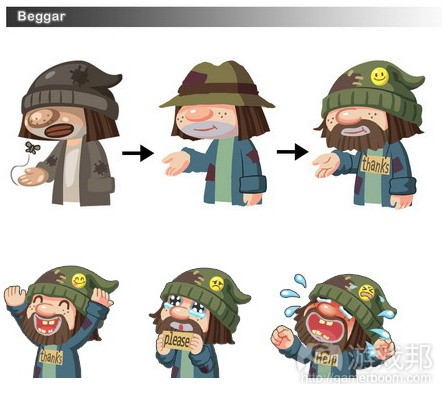
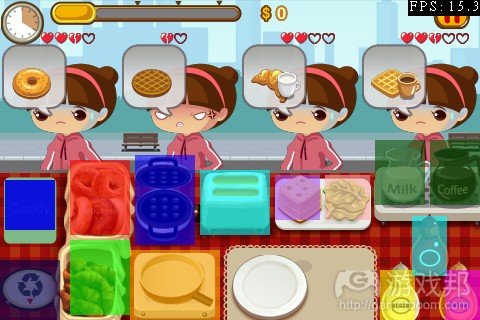
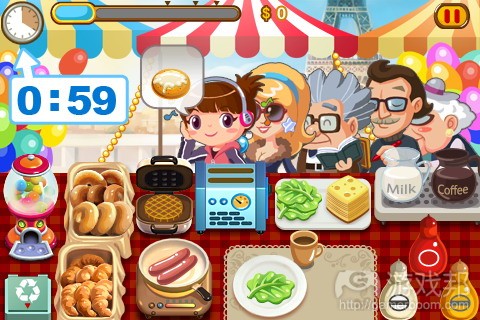
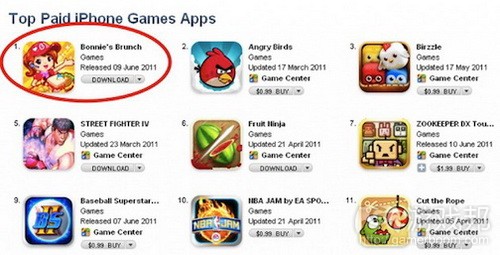
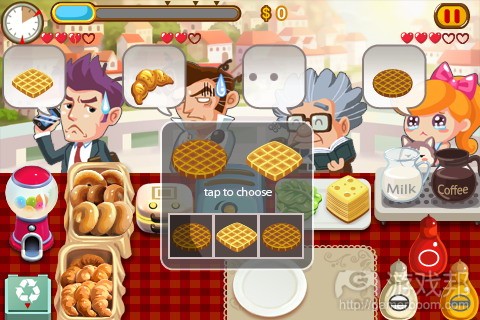

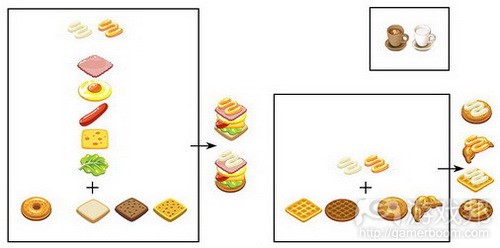
















 闽公网安备35020302001549号
闽公网安备35020302001549号